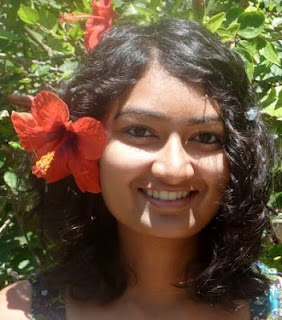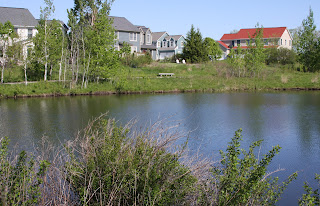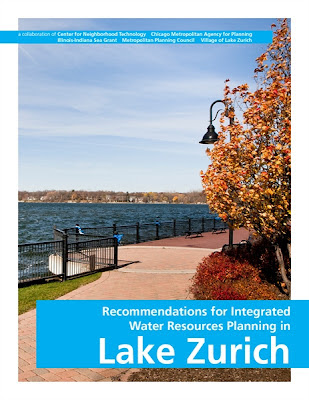Illinois-Indiana Sea Grant researchers and specialists have been able to extend internship opportunities to four students this summer. Working directly with our staff and researchers, the students will get hands-on experience in their field while helping us pursue ongoing projects. Read more about this year’s group of interns and the issues they’ll be helping us address and investigate below.
Naoki Wada is a fourth-year Mechanical Engineering student studying at Purdue University, and is interested in how ocean waves can be harnessed as a sustainable energy resource.
As a native of Japan, Naoki was particularly struck by the results of the 2011 earthquake and tsunami: “My home country, Japan, where the supply of natural resources is very scarce, experienced one of the largest earthquake and tsunami last year, putting most of their nuclear power plants out of operation due to the safety concerns and…forcing the nation to rethink their future energy security. As an island nation surrounded by the ocean, utilizing oceanic energy by means of wave/tidal/current/power generation can be a remedy.” Naoki feels that the United States can also benefit from technology related to ocean-generated power; in addition to providing sustainable energy, it doesn’t require as much land as solar or wind farms and may be more palatable to planners and developers. After his graduation at the end of this year, Naoki intends to pursue graduate work in this field.
During his 2012 summer internship, Naoki is working with IISG-funded researcher Cary Troy of Purdue University and IISG staffers Carolyn Foley and Angela Archer to deploy a real-time monitoring buoy off of Michigan City, IN. The buoy will beam information about wave height, water temperature, wind direction, and other variables to the web every 10 minutes. Naoki is responsible for getting the buoy up and running so that IISG and Purdue University can continue to deploy it every year in the same location.
Sahana will be a senior at the University of Pennsylvania next year, and is majoring in Environmental Science with minors in Psychology and Economics. Sahana grew up in the Chicago area and considers Chicago her home, making this internship a terrific opportunity to work on issues close to her heart.
Sahana is working at the Chicago Metropolitan Agency for Planning (CMAP) this summer with IISG/CMAP Water Resource Economist Margaret Schneemann to create an outdoor water use manual for the 80 member-communities of the Northwest Water Planning Alliance (NWPA) in Illinois. The NWPA Outdoor Water Use manual is meant to educate homeowners about the consequences of outdoor water use and provide information on various approaches that homeowners or their communities can take to conserve water by reducing their outdoor use. The manual also contains information on a lawn-watering ordinance that the NWPA is recommending its member communities to adopt.
Meredith Brackett
Meredith is a recent graduate of the University of Illinois Urbana-Champaign, with a bachelor’s degree in Earth Systems Environment and Society. While planning to attend graduate school in the future, her internship with IISG will allow her to gain hands-on experience in the field as well as helping her find areas and issues for future study.
Meredith explains more: “I am working with Dr. Paris Collingsworth this summer and we are conducting a study to compare zooplankton community data collected by the Great Lakes National Program Office (GLNPO) with data collected by the Interagency Lower Trophic Level Monitoring Program of the Lake Erie Committee Forage Task Group (LEC-FTG). We are using statistical models to calculate zooplankton community similarity metrics at specific sample sites through time and space. This study will determine whether the LEC-FTG survey is capturing zooplankton community characteristics that are unique to those captured by the GLNPO data set.”
Lainey Pasternak
Lainey will be entering her junior year at the University of Illinois this fall, majoring in Natural Resources and Environmental Sciences, with a concentration in Resource Conservation and Restoration Ecology.
As an intern with IISG, Lainey will be working to help increase recreational water user knowledge of and education about steps to prevent aquatic invasive species from spreading in the Southern Lake Michigan area. She will also be designing and conducting a survey to evaluate Illinois-Indiana Sea Grant’s current outreach efforts, and use those results to formulate a formal research report and academic poster presentation by the end of the summer. Lainey will then be presenting the findings and the entire scope of her internship work at the 2012 Illinois Water Conference at the University of Illinois.
“Becoming an intern with IISG’s Aquatic Invasive Species Outreach team has allowed me to acquire a stronger knowledge base about the general AIS issues and management in the Great Lakes area, the role of recreational water users in their spread, and the importance of evaluating outreach campaigns,” Lainey says. “By surveying and speaking directly with the public, I will gain further insight into how to communicate current complex environmental issues with and to others. Overall, I am very excited to be a part of the Illinois-Indiana Aquatic Invasive Species Outreach Team this summer and expect to make a difference in this area for our future clean waters.”
We look forward to the results of the hard work from our interns, and sharing their efforts in another post later this year. Check back to see how these projects are progressing.

Large portions of both Illinois and Indiana continue to experience very low rainfall and drought conditions, and many homeowners are wondering what to do about their lawns. With water in high demand, several communities place watering schedules or restrictions in effect in order to conserve the available water. But what to do about your lawn?
According to Richard Hentschel, a horticulture educator who works with our
Lawn to Lake program, the simple answer is – nothing.
“’If your lawn is brown, it’s not dead,’ says Richard Hentschel, a University of Illinois Extension horticulture educator based in St. Charles (urbanext.illinois.edu/hort). ‘The grass has just hunkered down into survival mode. The plants have stopped growing and given up on their leaves to conserve water and are concentrating all their resources on keeping their roots and crowns alive.’”
Lawns are capable of surviving the conditions, but one area of concern is trees.
“Lawns are easily replaced, but trees are not. Even large trees need help to survive a drought – and if they die, it can take 20 or 30 years to replace that shade. Stress from the 2005 drought killed trees over the next several years. So put trees at the top of the list for watering.
Let the hose trickle for a good long time in several places under the tree’s canopy. Or spiral a soaker hose loosely around a tree trunk. Or buy a soaker bag at the garden center that will slowly ooze water to the roots. Most of a mature tree’s roots are within 6 to 8 inches of the soil surface.”
Richard Hentschel and Rachel Rosenberg (who is also quoted in the article) are both involved in our Lawn to Lakes program, which provides information to retailers, homeowners, and landscapers about natural lawn care alternatives and their benefits.
For more information about gardens, lawns, and ways to maintain them in these conditions, head to the link above for the complete article, and find lawn care tips and specifics for Northern Illinois, including information about watering, drought conditions, weed issues, and more at the new Lawn Talk website.
A lot of people are probably familiar with the streams, lakes, and rivers near where they live. Many people might even be able to point out where their local water treatment plant is. But what a lot of people might not know is that the water we use often comes from a long, long way away.
Watersheds are areas where water comes together and drains to a common place. In addition to the streams and rivers and creeks that we can see, though, watersheds encompass a huge range of pathways for water, and your nearby water supply might be part of a very large system that spans multiple states.
As a result, even in areas where there aren’t necessarily rivers nearby, what goes into our water directly or indirectly can have a big impact. Development and sprawl, even well outside of cities and away from rivers or lakes, can have a significant effect, and that is the focus of a recent article from The Atlantic Cities:
“Of course, obtaining sustainable development in town isn’t enough, in and of itself, to guarantee high quality, fishable and swimmable rivers and streams. Industry plays a part; utilities and waste water treatment plants play a part; sensitive farming, ranching, and/or timbering play a part, all in different proportions depending upon the particular watershed in question.”
The interconnectedness of watersheds is one of the main motivations behind initiatives like
Lawn to Lake and
Unwanted Medicines – keeping the bad stuff out of our water protects people, plants, and animals across a wide region.
The report combines study and information of a wide range of factors in order to provide appropriate recommendations for planning the community’s use of water.
From the Metropolitan Planning Council’s website:
“
This report is the culmination of one year of cooperative work, from March 2011 through March 2012, between the Village of Lake Zurich and a project team led by Metropolitan Planning Council in partnership with the Center for Neighborhood Technology, Chicago Metropolitan Agency for Planning, and Illinois-Indiana Sea Grant. Through MPC’s Community Building Initiative, the team also convened a 13-member task force consisting of volunteer members with expertise in ecology, economics, engineering, law, planning, and utility management, to assist and advise the project team.”
The report not only provides information to water planners and local officials in Lake Zurich, but can be a model for other communities, laying out a variety of factors to consider and ways to meet the needs of customers while planning for the future.
The complete report is available for download at the link above.







